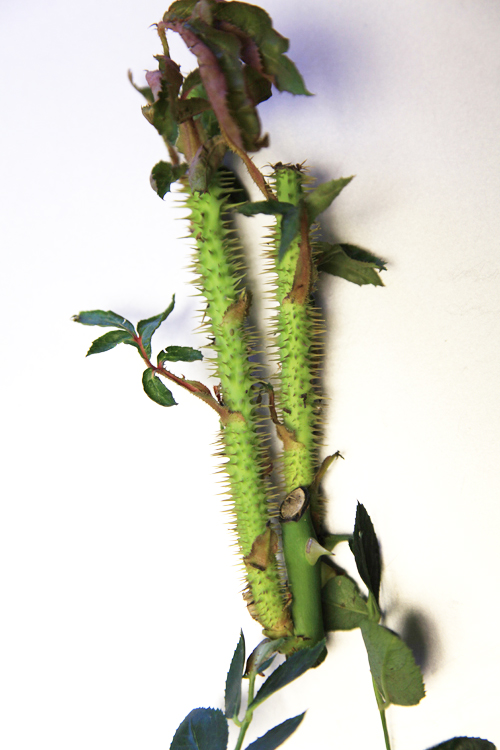This weekend I regretfully cut down two rose bushes on the side of my home. Within a relatively short period of time they had begun to show symptoms of rose rosette, a fatal virus disease of roses.
I had never heard of rose rosette until a recent sample arrived from the Denton County Extension office. Horticulture agent Janet Laminack wanted to know if the sample was rose rosette. The symptoms seen on these rose cuttings, I learned, were classic: excessive thorn production, leaf distortion and excessive branch development, known as witches broom, at the ends of branches.
Wild multiflora roses are the most susceptible, though gardeners throughout the eastern U.S. are beginning to see the disease in cultivated roses. The samples sent to me from Denton included yellow peach and red Knockout roses. At our home the two roses I suspected with the disease included an Archduke Charles and a Pinkie climbing rose (neither of which were positively confirmed).
The disease, which is now thought to be a negative sense RNA virus is transferred from plant to plant by a very tiny eriophyiid mite called Phyllocoptes fructiphilus. According to a Kansas State University publication by ornamental insect specialist Dr. Ray Cloyd, the offending mite is 140 to 170 microns long, and approximately 50 microns wide (the average human hair is about 100 microns wide), and may be seen with a good hand lens (and a good imagination I might add) between the leaf petioles and axillary buds of infested roses.
Cloyd notes that these ingenious mites move from plant to plant by attaching to insects, or they may disperse via air currents from infested to healthy plants. Symptoms on multiflora roses appear 90 days or more after infestation.
Rose rosette is not a new disease, though Kevin Ong with the Texas Plant Disease Diagnostic Lab, reports that he is receiving more questions about rose rosette this summer. The late Field Roebuck wrote an informative Dallas Morning News article in 1999 covering the history of rose rosette in Texas, noting that the first reports of the disease were in the early 1990s. Flare-ups, he noted, occur from time to time, but so far the disease has not posed a major threat to cultivated roses.
Still, it hurts to lose a favorite rose. Dr. Cloyd recommends abamectin, bifenthrin, carbaryl and endosulfan as effective miticides; however it also notes that long-term control of these mites is not really practical. “The most prudent solution,” he notes, “is to completely destroy infected rose plants.” This includes digging up and removing the roots. Perhaps the best use of sprays are as temporary protection for plants growing close to an infected plant that you have dug out.
Digging. That’s what I’ll be doing this weekend.

